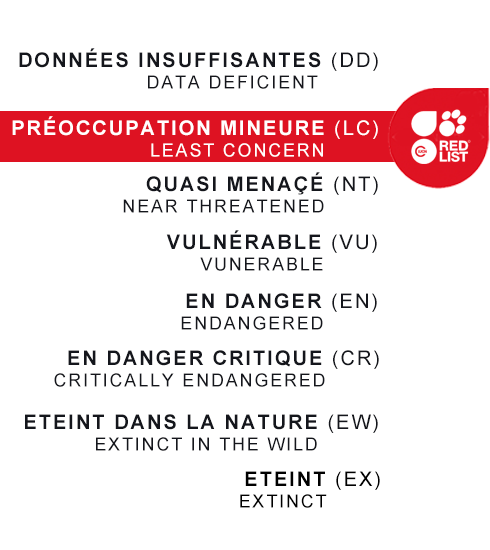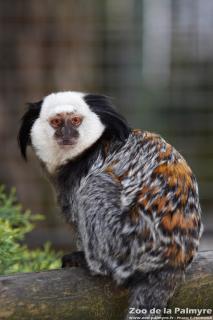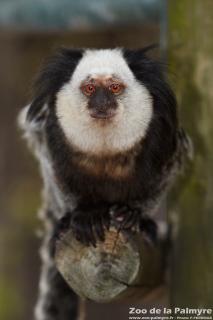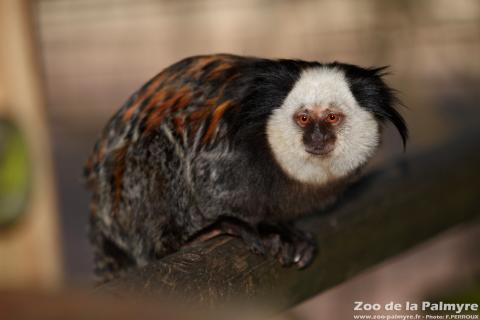Geoffroy’s Marmoset

Geoffroy’s Marmoset

-
Class
Mammalia -
Order
Primates -
Familly
Callithricidae
-
 18–23cm
18–23cm -
 ♂ 230–350g, ♀ 190g
♂ 230–350g, ♀ 190g -
 4½ months
4½ months -
 1–3
1–3 -
 up to 15 years in zoos
up to 15 years in zoos
-
Diet
omnivorous (fruit, gum, insects, small animals) -
Habitat
low-altitude forests -
Range
east–central Brazil -
 This species is part of a European Breeding Program
This species is part of a European Breeding Program
-
Population in the wild
En diminution -
IUCN REDLIST status


Females generally give birth to twins, sometimes triplets. The young are born without tufts of hair around their ears – these develop as they grow.
Marmosets and tamarins differ from other primates by their small size, their non-prehensile tails, their non-opposable thumbs and their claw-shaped nails (except on the big toe), which let them cling and move in an upright position on large tree trunks. They also have morphological adaptations that help them ferment and digest tree gum.
Though Geoffroy’s Marmosets are victims of the destruction of their habitat – the Atlantic forest of Brazil – which brings about an unequal distribution of their overall population, there are large local populations so the species is not seriously endangered for the moment.





